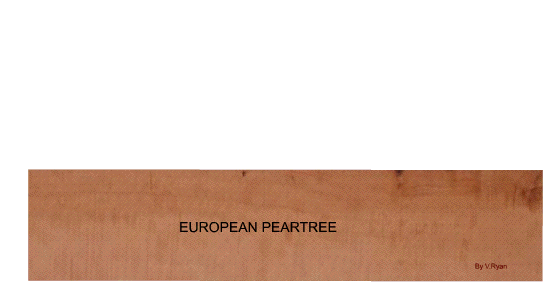| CLICK HERE FOR INDEX PAGE | |
| EUROPEAN PEAR TREE | |
| V. Ryan © 2008 | |
| This is a particularly attractive timber but
can prove extremely wasteful in conversion. Pyrus communis Family: Rosaceae Other names: Wild Pear, Choke Pear (UK). Distribution: Europe, including the UK, and Western Asia. |
|
 |
|
|
General Description: The heartwood is
pinkish-brown to mellow pink in colour after steaming with very fine rays
and pores, straight grained and very fine and even texture. Weight about
700kg/m3 (44 lb/ft3); specific gravity 0.70. |
|
| CLICK HERE FOR NATURAL WOODS IN DETAIL | |
| CLICK HERE FOR RESISTANT MATERIALS INDEX PAGE | |